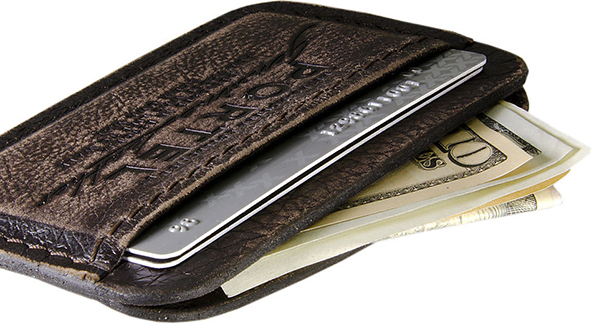Who Collects Your Debit Card Fees?

WSJ’s Robin Sidel has a piece about the effect of the Durbin Amendment on the debit card interchange fees charged by credit unions and small banks. Or rather, the lack of a direct effect, as financial institutions with assets of less than $10 billion were unaffected by the regulation.
That is an interesting topic for a number of reasons and not least because when the exclusion of smaller financial institutions from the Durbin Amendment’s scope was first proposed, we heard quite a few uneasy voices from the under-$10 billion financial world. See, the small-bank concern was that, by allowing them to charge substantially higher debit card transaction fees than their bigger competitors, the Durbin Amendment would make them very unpopular with retailers and may prompt them to take retaliatory actions.
Now Sidel is reporting signs of a retailer backlash against this special treatment. But what actually prompted me to comment on her story was the fact that she has made some misleading statements about the structure of payment processing fees. This is important and is something many non-industry observers don’t seem to understand. Let me explain.
What Did the Durbin Amendment Do?
In order to understand what is wrong with the WSJ piece, you first need to understand what the Durbin Amendment did and what it didn’t do. So the Durbin Amendment mandated that the Federal Reserve ensure that debit card interchange fees are “reasonable and proportional.” The Fed responded by placing an upper limit of about $0.24 (0.05% + $0.21 + $0.01 per transaction), on average, on these fees, which is 45 percent lower than the pre-reform average of $0.44.
Now, what are interchange fees? These are the fees collected by issuers every time one of their cards is used for payment. These fees make up only a portion (which can and does vary greatly in relative size from one merchant to another) of the total amount paid by merchants for the processing of each card transaction.
The other portion of the card processing fees is charged by the payment processor, which is an entity that is separate from the card issuer and which has entered into an exclusive agreement with the merchant to enable it to accept bank cards for payment. The Durbin Amendment did not touch this part of the processing fees. Moreover, the processor-charged fees are the same for all debit cards, irrespective of whether they are issued by a large or a small bank. There are no reliable data on the average size of these fees, but what is known is that they can cover an enormous range and typically the very large merchants can squeeze them almost to the point of oblivion.
Who Collects Your Debit Card Fees?
Now that you know what the reform did and didn’t do, we can proceed to Sidel’s story. Here is the passage that caught my attention:
[S]mall banks and the middlemen that process their debit-card transactions will collect fees that are often three times the size of those imposed on cards issued by big banks. For example, a $100 sweater purchase made with a debit card would incur a fee of 95 cents on a card issued by a smaller bank, more than triple the 26 cents for debit cards issued by big banks.
Let’s break this down.
In the first sentence we are told that the total processing fees charged by a small bank can be “often three times the size of those” charged by a large bank. While it is true that small-bank debit interchange varies, while large-bank interchange no longer does, this is a misleading statement. You now know that, on average, the interchange fees charged by smaller banks will be less than twice as large as the ones charged by the bigger ones ($0.44 vs. $0.24). You also know that the processor’s fee is precisely the same for all debit cards, which additionally minimizes the difference.
But the second sentence is even more misleading. It is not that the example given by Sidel is necessarily unrealistic. On the contrary, it may, and probably is, a real-world one. In fact, we can find examples of even bigger discrepancies in favor of the small banks. But we can also give the following real-life example (using the $0.02 per-transaction processor fee that Sidel is using in her calculations):
A $3 latte purchase made with a debit card would incur a fee of 24 cents ($3 x 0.05% + $0.22) on a card issued by a big bank, almost triple the 9 cents (calculated using the 1.55% + $0.04 Visa CPS / Small Ticket, Debit interchange rate) for debit cards issued by small banks.
So we can also find substantial differences in favor of the large banks. Our calculations show that under the new pricing structure big issuers will be making more money from debit transactions in amounts of up to $11 or so than they were under the old one. This is why it is important to look at the averages when making such general statements.
The Takeaway
So the Durbin Amendment’s impact on processing fees is much more subtle than Sidel and many other commentators realize. And the biggest thing non-industry observers don’t seem to understand is that for a very large number of merchants the Durbin Amendment’s impact will be precisely non-existent. The reason is that the most prevalent pricing model out there – the tiered one – which comes in many different shapes and forms, does not pass any interchange savings (or dissavings, for that matter) on to the merchant. Instead, these differences, either positive or negative, are absorbed by the processor. But this is a topic for another post.
Image credit: Etsystatic.com.



It’s really unfortunate that small-ticket retailers should be hit hard by the Durbin Amendment, especially when you consider the huge gains most other retailers will be enjoying. It just makes no sense to me that the law should be written in such a way. These guys should have been paying more attention to what they were doing.